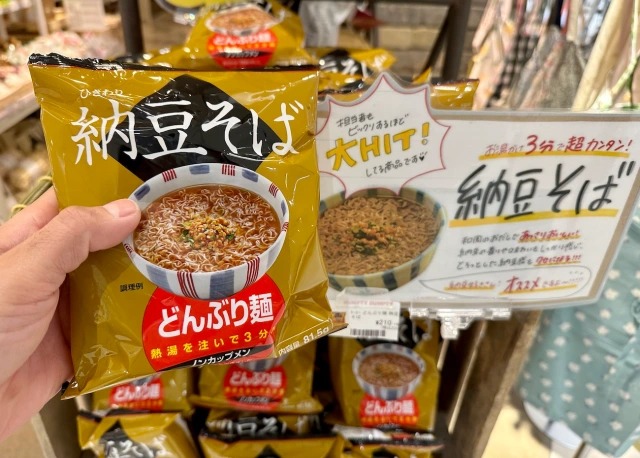
Is Natto Soba natto what it seems?
While out doing his daily shopping, our reporter Masanuki Sunakoma spotted something interesting at his local grocery store. This product called Natto Soba was prominently displayed and labeled as a “Hot Item” and “Big Hit,” which Masanuki found rather strange.
It’s not because Masanuki has any bias against the smelly fermented soybeans called “natto.” He was surprised because despite it being such a top seller the appeared to be no shortage of it in stock. Wondering if maybe he just caught it at a fresh shipment our reporter googled “Natto Soba” and didn’t get much, suggesting it wasn’t really a trending topic online either.
Nevertheless, at this point it was Masanuki’s moral obligation to try some of this suspicious stuff and see what all the fuss — manufactured or otherwise — was about. While grabbing a pack from the overflowing pile and heading to the checkout, our reporter scoped out all the other customers in the store, but nobody else had the “hot item” Natto Soba in their basket.
Feeling he might have been duped, he meekly paid 226 yen (US$1.72) and quickly tucked his noodles into his bag. It wasn’t until he got home that he examined the package, which said this was a product of Toei Foods in Seki City, Gifu Prefecture, home of Japan’s greatest swordsmiths and a pond that looks like something from a Monet painting.
Like any instant noodle pack, Natto Soba was super easy to prepare. First, Masanuki put the dried noodles into a bowl. Then, he added the seasoning which included dried natto.
Next, he boiled some water and poured it all over the dried components.
Right away, the distinct smell of natto billowed out and all the tiny beans seemed to rehydrate to all of their slimy glory.
Masanuki didn’t mind the smell because he associates it with health and vitality, but he had to cover the bowl for the next three minutes to lock in the heat as is the norm for instant noodles.
Three minutes later, his “big hit” meal was ready!
Looking at the finished product, Masanuki realized he had never actually had natto and soba together before. It’s not a common combination in Japanese cuisine, so do they even go together?
Not only did natto and soba go together, but they went together even better than he imagined they could. The seasoning of the broth was the perfect match for that unmistakable natto taste.
And the curly soba noodles were excellent at catching and locking in the beans and other ingredients so that each bite had a sense of balance and harmony. That smell from when the hot water was poured had died down considerably too and after a few bites there pretty much wasn’t any smell to speak of.
Part of the reason it tasted so good might have had to do with the absence of any artificial flavors in the seasoning. If our reporter had to find one flaw with Natto Soba, it’s that it might not be natto-y enough to satisfy natto maniacs, but it’s sure to give natto moderates and those merely tolerant to natto a pleasant surprise.
Whether this really is a “big hit” or “hot item” still isn’t clear, but as far as Masanuki is concerned it ought to be.
Photos ©SoraNews24
● Want to hear about SoraNews24’s latest articles as soon as they’re published? Follow us on Facebook and Twitter!
[ Read in Japanese ]

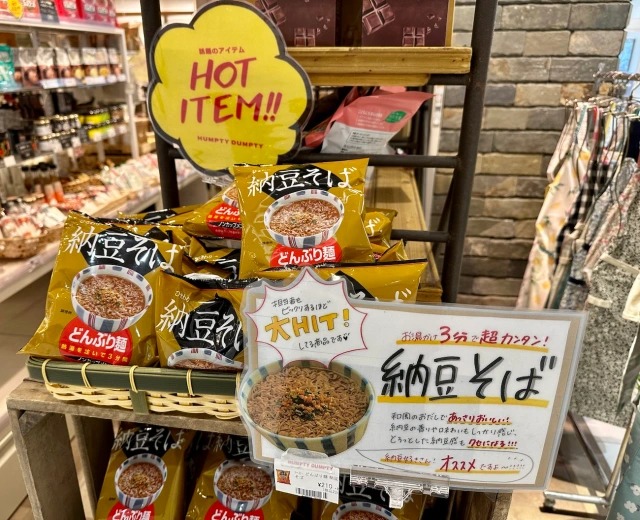
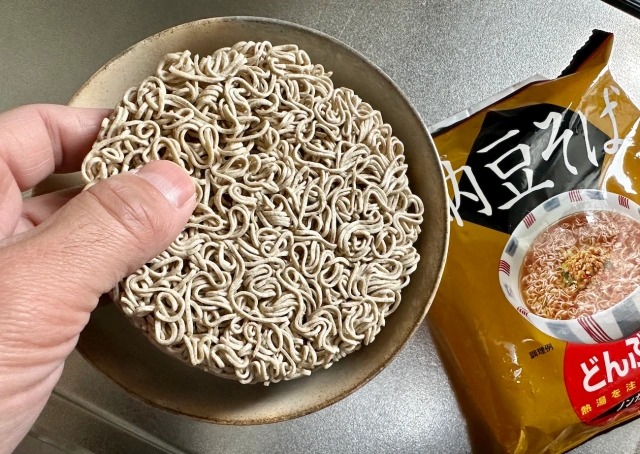
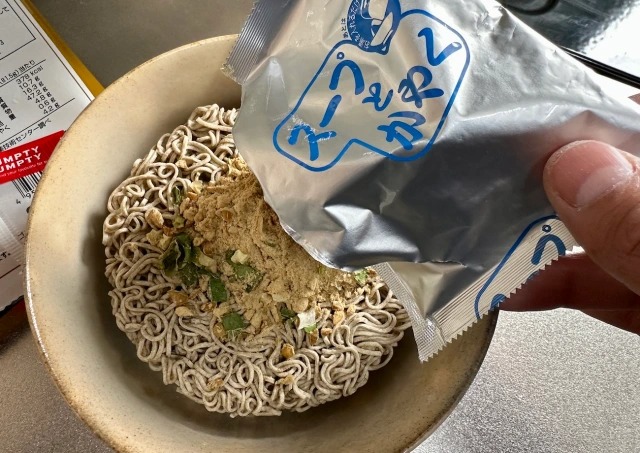
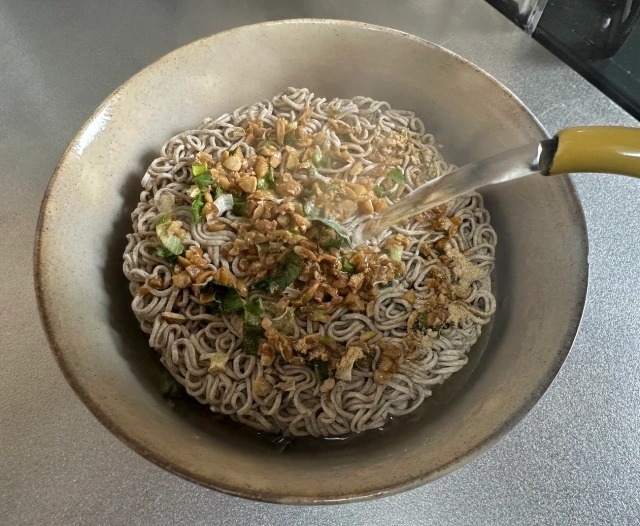
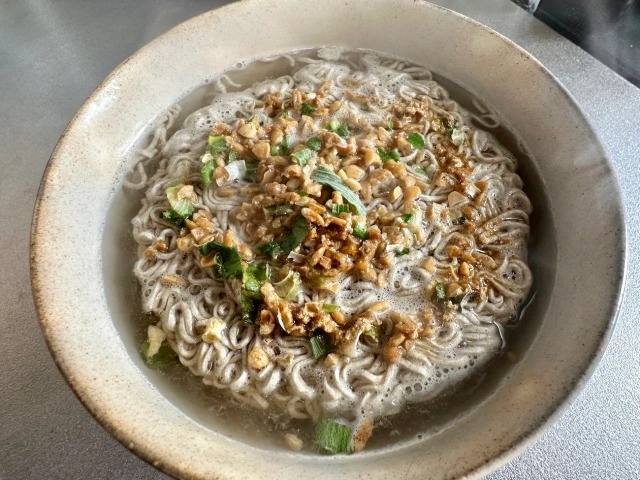
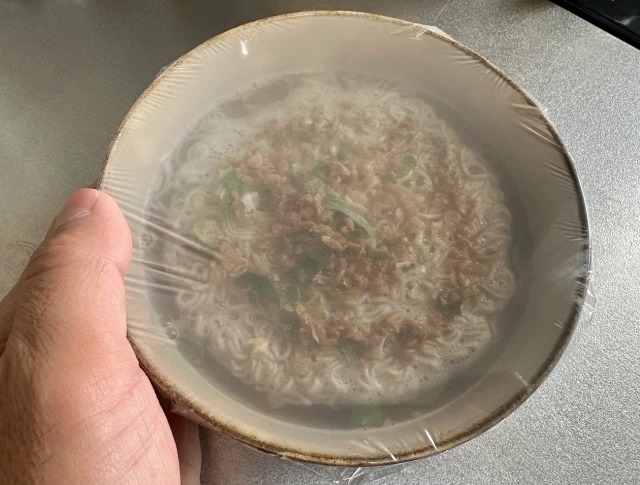
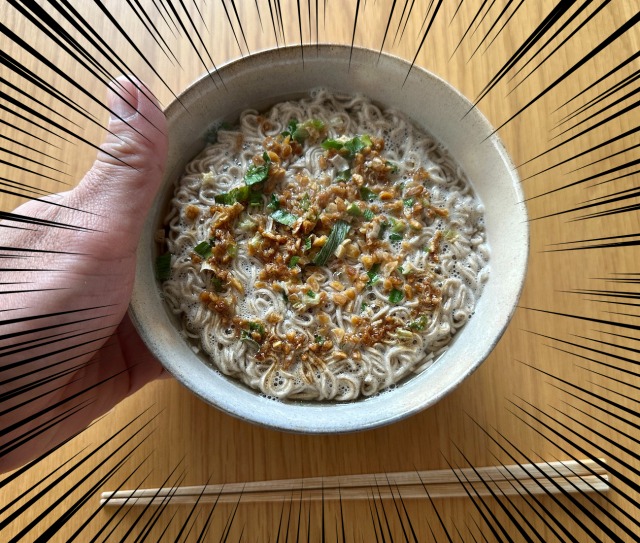
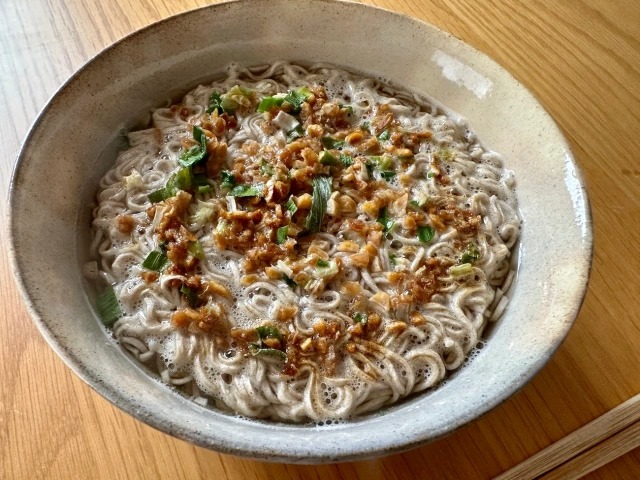
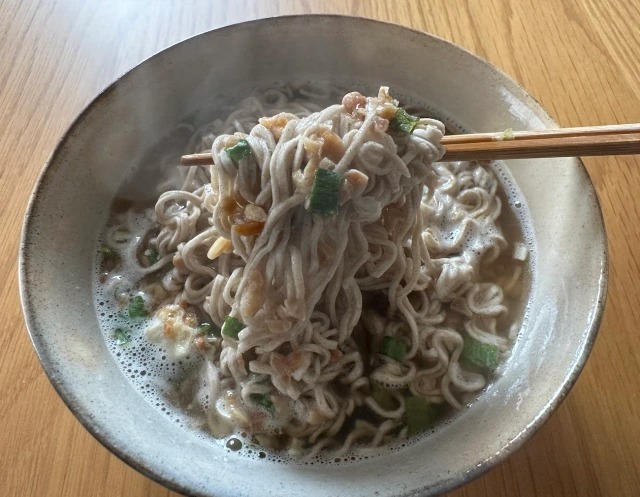
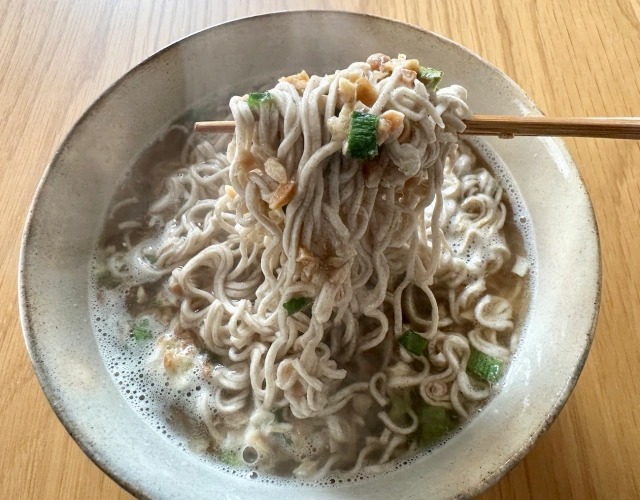
 Our natto maniac verifies the legitimacy of fermented soybean-flavored potato chips【Taste test】
Our natto maniac verifies the legitimacy of fermented soybean-flavored potato chips【Taste test】 We spice up our fermented soybeans with curry powder flavored natto【Taste Test】
We spice up our fermented soybeans with curry powder flavored natto【Taste Test】 Natto Boys want to take their smelly beans to Africa, but they need your help
Natto Boys want to take their smelly beans to Africa, but they need your help Mizkan develops world’s most “beautiful” natto, Mr. Sato takes it for a spin
Mizkan develops world’s most “beautiful” natto, Mr. Sato takes it for a spin We tried making natto the old-fashioned way, and the result was unexpected but delicious 【SoraKitchen】
We tried making natto the old-fashioned way, and the result was unexpected but delicious 【SoraKitchen】 Hello, cosmetics! Clinique teams up with Hello Kitty this summer for first-time collaboration
Hello, cosmetics! Clinique teams up with Hello Kitty this summer for first-time collaboration How to order snacks on a Shinkansen bullet train in Japan
How to order snacks on a Shinkansen bullet train in Japan Burger King Japan suddenly adds Dr. Pepper and Dr. Pepper floats to its menu nationwide
Burger King Japan suddenly adds Dr. Pepper and Dr. Pepper floats to its menu nationwide Japan’s new difficult-to-drink-from beer glass protects your liver, but it’s a brutal experience
Japan’s new difficult-to-drink-from beer glass protects your liver, but it’s a brutal experience New samurai glasses are Japan’s latest weird must-have souvenir
New samurai glasses are Japan’s latest weird must-have souvenir Studio Ghibli releases Ponyo donburi bowl to bring anime ramen to life
Studio Ghibli releases Ponyo donburi bowl to bring anime ramen to life New Nintendo Lego kit is a beautiful piece of moving pixel art of Mario and Yoshi【Photos】
New Nintendo Lego kit is a beautiful piece of moving pixel art of Mario and Yoshi【Photos】 Nintendo history you can feel – Super NES, N64, and GameCube controllers become capsule toys
Nintendo history you can feel – Super NES, N64, and GameCube controllers become capsule toys Demon Slayer: Kimetsu no Yaiba gets new roller coaster attractions and food at Universal Studios Japan
Demon Slayer: Kimetsu no Yaiba gets new roller coaster attractions and food at Universal Studios Japan High-fashion Totoro cuddle purse is like an elegant stroll in the forest【Photos】
High-fashion Totoro cuddle purse is like an elegant stroll in the forest【Photos】 “The most Delicious Cup Noodle in history” – Japan’s French Cup Noodle wins our heart【Taste test】
“The most Delicious Cup Noodle in history” – Japan’s French Cup Noodle wins our heart【Taste test】 Starbucks releases a cute Frappuccino and Unicorn Cake…but not in Japan
Starbucks releases a cute Frappuccino and Unicorn Cake…but not in Japan Kyoto Tower mascot termination reveals dark side behind cute Japanese characters
Kyoto Tower mascot termination reveals dark side behind cute Japanese characters McDonald’s Japan’s Soft Twist Tower: A phantom ice cream only sold at select branches
McDonald’s Japan’s Soft Twist Tower: A phantom ice cream only sold at select branches Yabai Ramen: What makes this Japanese ramen so dangerous?
Yabai Ramen: What makes this Japanese ramen so dangerous? Finally! Nintendo Japan expands Switch 8-bit controller sales to everybody, Online member or not
Finally! Nintendo Japan expands Switch 8-bit controller sales to everybody, Online member or not Japanese government wants to build luxury resorts in all national parks for foreign tourists
Japanese government wants to build luxury resorts in all national parks for foreign tourists To combat declining birth rate, Japan to begin offering “Breeding Visas” to foreigners
To combat declining birth rate, Japan to begin offering “Breeding Visas” to foreigners 10 things you should buy at 7-Eleven in Japan
10 things you should buy at 7-Eleven in Japan Studio Ghibli releases anime heroine cosplay dresses that are super comfy to wear
Studio Ghibli releases anime heroine cosplay dresses that are super comfy to wear Woman charged for driving suitcase without a license in Osaka
Woman charged for driving suitcase without a license in Osaka Studio Ghibli unveils My Neighbour Totoro miniature house model
Studio Ghibli unveils My Neighbour Totoro miniature house model Kyoto experiencing problems with foreign tourists not paying for bus fares, but not on purpose
Kyoto experiencing problems with foreign tourists not paying for bus fares, but not on purpose Fighting mild hunger with a Japanese soda that turns into jelly in the stomach【Taste test】
Fighting mild hunger with a Japanese soda that turns into jelly in the stomach【Taste test】 Studio Ghibli’s Howl’s Moving Castle tapestry unveiled in Japan for first time
Studio Ghibli’s Howl’s Moving Castle tapestry unveiled in Japan for first time McDonald’s new Happy Meals offer up cute and practical Sanrio lifestyle goods
McDonald’s new Happy Meals offer up cute and practical Sanrio lifestyle goods Sales of Japan’s most convenient train ticket/shopping payment cards suspended indefinitely
Sales of Japan’s most convenient train ticket/shopping payment cards suspended indefinitely Sold-out Studio Ghibli desktop humidifiers are back so Totoro can help you through the dry season
Sold-out Studio Ghibli desktop humidifiers are back so Totoro can help you through the dry season Japanese government to make first change to romanization spelling rules since the 1950s
Japanese government to make first change to romanization spelling rules since the 1950s Foreigner’s request for help in Tokyo makes us sad for the state of society
Foreigner’s request for help in Tokyo makes us sad for the state of society Ghibli founders Toshio Suzuki and Hayao Miyazaki contribute to Japanese whisky Totoro label design
Ghibli founders Toshio Suzuki and Hayao Miyazaki contribute to Japanese whisky Totoro label design Doraemon found buried at sea as scene from 1993 anime becomes real life【Photos】
Doraemon found buried at sea as scene from 1993 anime becomes real life【Photos】 Tokyo’s most famous Starbucks is closed
Tokyo’s most famous Starbucks is closed Princesses, fruits, and blacksmiths: Study reveals the 30 most unusual family names in Japan
Princesses, fruits, and blacksmiths: Study reveals the 30 most unusual family names in Japan Pizza Hut’s sakura pizza takes cherry blossom season to weird places in Taiwan
Pizza Hut’s sakura pizza takes cherry blossom season to weird places in Taiwan We try a new natto coffee ice cream that took 17 months to perfect
We try a new natto coffee ice cream that took 17 months to perfect Soap made from natto coming to Tokyo a week after Natto Day
Soap made from natto coming to Tokyo a week after Natto Day Toast with fermented soybeans and honey may not be good-looking, but it is good eating
Toast with fermented soybeans and honey may not be good-looking, but it is good eating Instant noodle company combines yakisoba noodles with fermented natto bean topping
Instant noodle company combines yakisoba noodles with fermented natto bean topping We eat an intimidating curry with toppings randomly chosen for us by CoCo Ichibanya’s ‘Gacha’ app
We eat an intimidating curry with toppings randomly chosen for us by CoCo Ichibanya’s ‘Gacha’ app Savoring one of the stinkiest foods in the world: Sweden’s surströmming
Savoring one of the stinkiest foods in the world: Sweden’s surströmming Custard pudding with natto fermented soybeans? We try the new dessert craze sweeping Japan
Custard pudding with natto fermented soybeans? We try the new dessert craze sweeping Japan What the heck is okame soba?
What the heck is okame soba? Natto for beginners? How to half-make Japanese fermented soybeans at home【SoraKitchen】
Natto for beginners? How to half-make Japanese fermented soybeans at home【SoraKitchen】 All-you-can-eat stinky fermented soybeans come to Ginza, if that’s your thing
All-you-can-eat stinky fermented soybeans come to Ginza, if that’s your thing We try ice cream with a topping of natto fermented soybeans, because the Internet told us to
We try ice cream with a topping of natto fermented soybeans, because the Internet told us to A pack of natto (fermented Japanese soybeans) a day keeps the death away according to study
A pack of natto (fermented Japanese soybeans) a day keeps the death away according to study New magic powder purports to make natto edible even for bean-haters
New magic powder purports to make natto edible even for bean-haters 10 things you should buy at 7-Eleven in Japan
10 things you should buy at 7-Eleven in Japan Mercedes-Benz dealer in Tokyo serves up amazing yakisoba noodles【Taste test】
Mercedes-Benz dealer in Tokyo serves up amazing yakisoba noodles【Taste test】 We eat Chinese food inspired by Demae Itcho instant ramen to celebrate its 55-year anniversary
We eat Chinese food inspired by Demae Itcho instant ramen to celebrate its 55-year anniversary
Leave a Reply